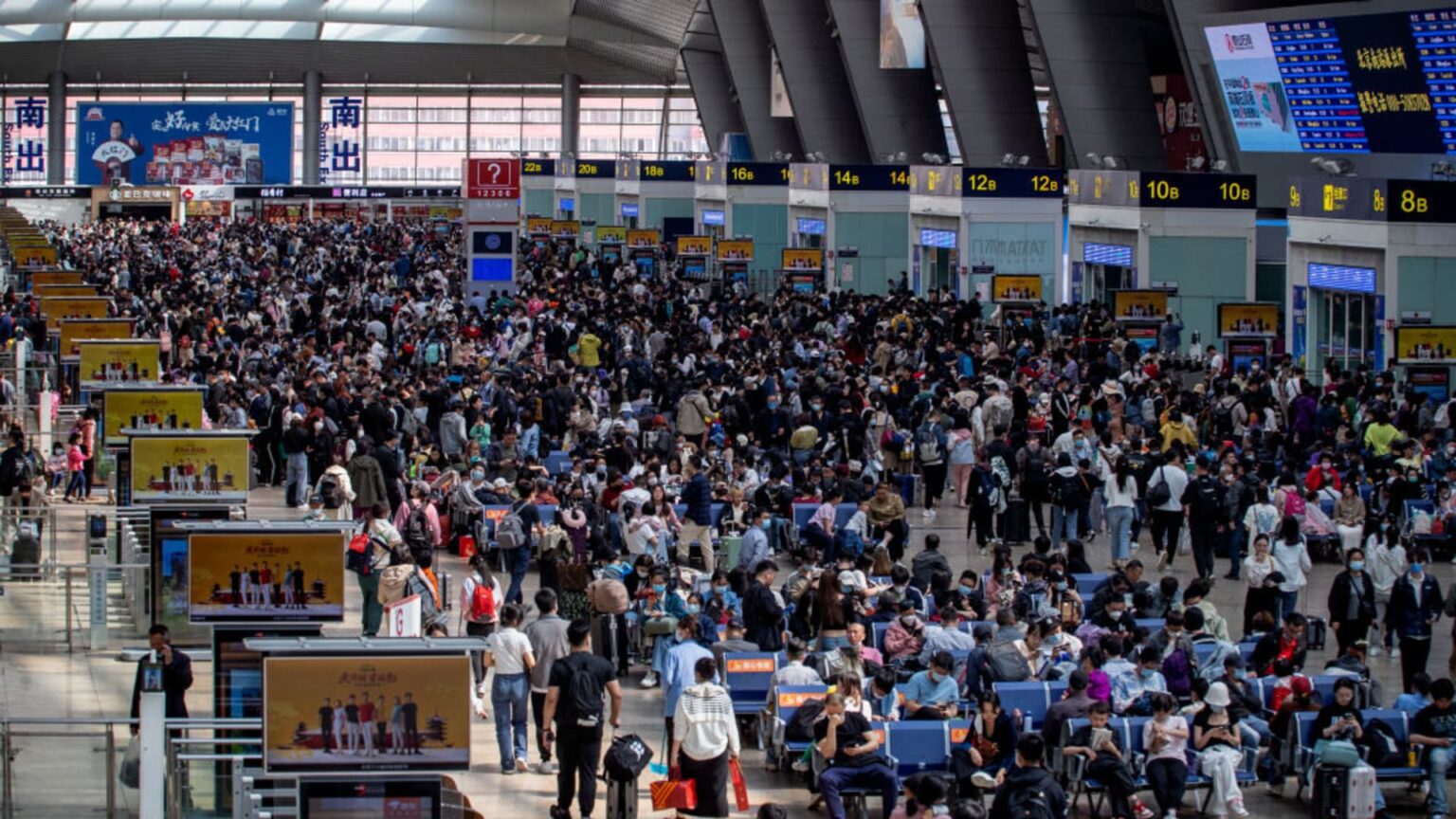Global Courant 2023-05-02 07:30:01
BEIJING, CHINA – APRIL 29: Beijing South Railway Station is seen in Beijing on Saturday, April 29, 2023.
Anadolu Agency | Anadolu Agency | Getty Images
The International Monetary Fund raised its forecast for Asia-Pacific, saying the region’s growth will be driven primarily by China’s recovery and India’s “resilient” growth. This comes as the rest of the world braces for slower growth due to tighter monetary policy and Russia’s invasion of Ukraine.
The organization forecasts Asia-Pacific gross domestic product to grow 4.6% this year, up 0.3 percentage points from its forecast in October, according to regional economic forecasts for May released Tuesday.
The region’s two largest emerging market economies are expected to contribute about half of global growth this year.
International Monetary Fund
The IMF’s improved outlook would mean the region would contribute about 70% of global growth, it said. The region grew by 3.8% in 2022.
“Asia and the Pacific will be the most dynamic of the world’s major regions in 2023, driven primarily by the favorable outlook for China and India,” the IMF said in its report.
“The region’s two largest emerging market economies are expected to contribute about half of global growth this year, while the rest of Asia and the Pacific will contribute another fifth,” the report said.
On a country basis, the organization raised its growth forecasts for China, Malaysia, the Philippines and Laos to 5.2%, 4.5%, 6% and 4% respectively.
Although it has revised its forecasts for India’s full-year growth, the IMF still expects the economy – poised to become the most populous country in the world – to grow by 5.9% in 2023.
Slower developed economies
Despite the general optimism for the region – especially due to the brighter outlook for emerging markets – the IMF lowered its forecasts for Japan, Australia, New Zealand, Singapore and South Korea.
“Stronger foreign demand from China will provide some respite for developed economies in the region, but is expected to be more than offset by drag from other domestic and external factors,” it said, while growth in Asia beyond China and India is expected. low point in 2023.”
Stock Picks and Investment Trends from CNBC Pro:
It cut Japan’s growth estimates for 2023 to 1.3% to reflect “weaker foreign demand and investment and carryover of disappointing growth in the last quarter of 2022”.
The weakening of domestic demand in Australia and New Zealand due to central bank tightening is also expected to “dampen growth prospects” this year to 1.6% and 1.1% respectively, the report said.
“Inflationary pressures in Asia’s advanced economies are expected to be more persistent than projected in the October 2022 World Economic Outlook, as wage growth has recently become more pronounced in Australia, Japan and New Zealand,” the IMF said in its report.
Overflow from China
China’s high consumption is likely to spill over to the rest of the Asia-Pacific region, the IMF said, adding that China’s reopening after lifting most of its severe Covid restrictions “will result in an increase in private consumption that will boost China’s growth.”
That effect is expected to be greater than that of other growth engines, such as investments.
The near-term economic impact of China’s recovery is “likely to vary by country, with those more dependent on tourism likely to benefit the most,” it said, noting that a rise in Chinese imports will be most strongly reflected in services.
Learn more about China from CNBC Pro
The IMF said Asia-Pacific economies could also experience knock-on effects from the ongoing geopolitical tensions in China. The organization previously estimated that global tensions could disrupt and lead to foreign investment a long-term loss of 2% of global gross domestic product.
“The risks of further fragmentation in world trade are becoming increasingly important given the ongoing trade disputes between the US and China (including new restrictions on trade in high-tech products) and heightened geopolitical tensions related to Russia’s war in Ukraine,” it said.







